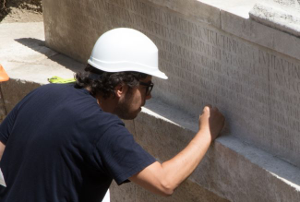|
Coming-of-age Party, Famine Feature in Pompeii Inscription
September 29, 2019
A newly deciphered message found on the wall of a tomb in the ruins of Pompeii reveals more details about life in the Roman city destroyed by Mount Vesuvius. Archaeologists found the inscription in 2017 but have only now been able to read it fully and understand it. Officials say that it is the longest funerary epigraph ever found. Among the topics discussed:
Archaeological Park of Pompeii Director General Massimo Osanna reported the findings in the Journal of Roman Archaeology. Information like the number of couches used at the wealthy young man's party could help determine the population of the city, Osanna said, because the young man likely would have invited only a select number of the population. As well, the sheer number of gladiators involved in the fighting would have necessitated a sustained celebration, meaning that the man who threw the party would have had access to great wealth. What officials don't know for sure is who is buried in the tomb because they have not yet found his name and it does not appear in the epigraph. Nearby Mount Vesuvius erupted in A.D. 79, burying the town of Pompeii, along with neighboring Herculaneum, under loads of lava and ash. The devastation also created a moment-in-time by preserving the two towns, leading to many discoveries by archaeologists through the years. |
Social Studies for Kids |
Social Studies for Kids
copyright 2002–2024
David White





